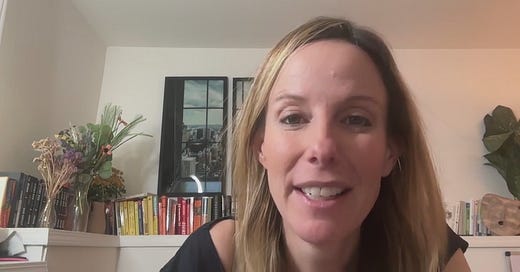🎬 TL;DR: WATCH THE VIDEO (click above) for the full insights on Klarna’s checkout and loyalty strategy. Only takes 4 minutes at 2x speed. ⏩
With buy now pay later (BNPL) options flooding the market, Klarna faces a challenge every product manager will recognize: keeping your flow simple and user-friendly while still allowing user choice. And it seems they’re doing something well, given their over $2B in revenue and 85M users.
In today’s teardown, we pick apart Klarna’s checkout flow, payment tactics, and all the little (and not-so-little) friction points that could make or break a conversion. What’s working? What might be slowing people down? And most importantly, what lessons can product managers take from Klarna’s approach?
Why BNPL works: Breaking big payments (and numbers) into smaller ones
BNPL shows prices in smaller, bite-sized amounts—like “4 payments of $48”—instead of showing the full total right away. Seeing a smaller, more manageable number can make people feel more comfortable going through with a purchase. There’s something about breaking down a big price into digestible chunks that makes it feel a lot lighter. Especially when users might otherwise abandon their carts over cost concerns.
Klarna’s advantage: Simplicity converts
Klarna’s “pay-in-4” option keeps things simple, avoiding the common BNPL trap of overwhelming users with too many plans. By sticking to a single, clear option, Klarna reduces decision fatigue and builds confidence, making it easier for users to follow through without overthinking. Setting a default, accessible choice like this can reduce friction and keep users moving smoothly through checkout.
Offset friction with value
At Irrational Labs we talk a lot about the balance of benefits and barriers. Too many barriers and people will abandon your flow. But if barriers (friction!) are unavoidable, then you need big immediate benefits to keep users motivated and continuing through your flows. Klarna has that—they have big barriers and big immediate benefits.
The barriers: Klarna’s checkout flow has an impressive amount of hurdles: verifying your phone number, switching between devices, downloading an app. Some users might push through for the benefit of BNPL, but first-timers could easily drop off.
The benefits: Klarna is betting that splitting payments will keep people motivated through these steps. People are willing to jump through hoops to get whatever gadget or widget they really want—at a cost they can afford today. Chime has also figured this out; you need to switch banks (so hard!) but once you do, you get your paycheck two days sooner. That’s a big immediate benefit that can override the friction of switching banks.
Still, every added click is a new chance for abandonment. While friction can work when the payoff is clear, fewer steps generally make for a smoother experience.
Loyalty over one-time clicks
Summing up, Klarna’s clear payment display and simplified options make it a top BNPL player. But as the market grows, making users feel more valued and motivated to come back would help strengthen their position. In a competitive market, building loyalty can be just as crucial as acquiring new users—and it’s often more sustainable.
🎬 Watch the full video for all insights and examples. It only takes 4 minutes at 2x speed.
Have a friend who would enjoy these teardowns? Click the button below to refer them (& earn some great rewards).👇
📧 Questions about product adoption? Shoot me an email: kristen@irrationallabs.com.
Want to increase conversion, retention, engagement? Reach out to Irrational Labs.
We design products that change behavior, using behavioral science. Check out our case studies to see it in action.





Share this post